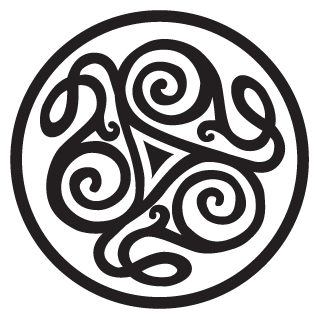The Creative Imagination and Transformation
Cosmic Light Mandala - Acrylic painting with mixed media
Intuition, Heart-Knowing & Creativity
Accessing multiple ways of knowing using our creativity and imagination can promote transformation and guide us towards wholeness. By facilitating access to underused natural capacities, powerful insights can emerge through bodily feelings, metaphor and intuitive knowing. These innate human capacities are often sidelined or unacknowledged in Western society. In The Master and his Emissary, Ian McGilchrist emphasises the tendency to value rational thinking above the imagination. He explains how the right-brain and left-brain work best in synergy, but a hemispheric disconnection has developed; the rational, linear mind now typically has dominion. This focus on the development of cognitive abilities can come at the expense of our intuition and heart-knowing, both of which are deeply connected to creativity.
Autonomy and Creative Thinking
The sociologist and futurist, Aftab Omer, points out how cultural gatekeepers control the breadth of experience by indoctrinating society in predetermined patterns of belief and behaviour. This often means that there is a tendency to suppress our authentic, heart-felt thoughts and inner promptings in favour of the opinions and belief systems of others. Discernment is, of course, essential here; just because we feel something does not make it accurate. However, we can begin to notice moments when we blindly follow the advice of others or accept established rules, without considering whether they are beneficial or wise. Using both our discursive, analytical mind and a connection with a deeper wisdom that has access to a more expansive, holistic perspective can provide a balance between discernment and openness. A good way to begin to tune into our inner promptings is to create some time for spontaneous movement or intuitive art. This can not only help us to trust subtle feelings and nudges but can also highlight any blocks to the process. Relinquishing conscious control can often be more difficult than anticipated but, with time and patience, our authentic expression can unfold. By engaging with the creative imagination in playful spontaneity, we can potentially bypass trained responses and open up new pathways to self-understanding and growth.
Cosmic Creativity - Orginal monoprint, digitally altered
Cosmic Creativity
As well as unearthing deep inner wisdom, perhaps creativity can be a route to a more expansive source of knowledge. Ancient Greek philosophers believed that we needed to connect and resonate with the cosmos in order to receive insight and wisdom. Is it possible that authentic creative expression brings us closer into resonance with an underlying force of the cosmos? The Russian painter and pioneer of pure abstraction, Wassily Kandinsky, believed that art created from the inner world was aligned with the spiritual dimension of human nature. In this way, we can see the creative process as a portal to something more expansive; a way to connect not only with our deeper or higher selves but also with a collective source of spiritual wisdom.
Creativity can manifest through freedom of expression in all aspects of life, even something fleeting that leaves no lasting visible trace in the material world. By surrendering to what wants to flow through us and forgoing the intention of the rational mind/ego we can potentially become a conduit for a generative energetic force. As well as being a catalyst for healing and transformation on a personal level, this could create energetic ripples that extend far beyond the individual.
A conversation with a creative source
As a naturally dialogical process, creativity can connect us to something more expansive. I have found that imagery that is initially bewildering can reveal new aspects, even many years later, that were not apparent at the time. Continuous engagement with spontaneous creations can become like a long, cyclical conversation that unfolds in unexpected and synchronistic ways. Jungian analyst, Robert Johnson, describes the development of human consciousness in association with the evolution of language and states that “the symbolic imagery of the unconscious is the creative source of the human spirit in all its realisations.” Tapping into inner or collective imagery and allowing it to flow freely can be a powerful, healing and transformative process that connects us to something both primal and transcendent. Our natural capacity for creativity may help us to grow into our full potential, ultimately increasing our capacity to contribute to society as a whole.
References
Johnson, R. A. (2018). Inner work: Using dreams and active imagination for personal growth. Harper.
McGilchrist, I. (2012). The master and his emissary: The divided brain and the making of the Western World. Yale University Press.
Omer, A. (n.d.). Imagination, emergence and the role of transformative learning in complexity leadership. Enlivening Edge. https://enliveningedge.org/features/imagination-emergence-role-transformative-learning-complexity-leadership/
Steven, J. (2006) Kandinsky: The path to abstraction. Tate.


